In recent years, the issue of pay inequality has gained significant attention worldwide. Addressing this concern has become a central focus for organisations and governments alike, with many exploring various strategies to achieve fairer compensation.
One such strategy is wage transparency, which involves revealing salary information to employees and the public.
Advocates argue that increased transparency can foster fairer pay practices, promote employee satisfaction, and enhance workplace equality. However, there are also concerns related to privacy, competition, and other potential negative impacts on companies.
Wage transparency is also often billed as a solution to alleviate recruitment and retention challenges.
What is the stance on this for Singapore companies? Should employers disclose the salary range of all roles in their organisation, as well as how that salary range was derived?
Ultimately, can it help to foster fairer pay in Singapore, a country renowned for its economic success and commitment to equality?
Where does Singapore stand in terms of wage transparency?
In terms of wage transparency, Singapore currently does not have a robust unified framework in place.
Unlike some countries and regions, such as Australia, California, New York, and the European Union, which have implemented pay transparency laws and regulations, Singapore currently does not have legislation mandating the disclosure of salary ranges or individual employee salaries.
However, this will soon change. The Singapore Exchange Regulation announced early this year that Singapore-listed companies will be required to disclose the exact amount of payouts and salaries paid to their individual directors and chief executive officers in their annual reports.
The new rule will take effect for annual reports prepared for the financial years ending on, or after 31 December 2024.
Singapore has also seen some other developments regarding wage transparency. According to a survey by jobs portal Indeed, there has been an increase in the share of job postings that include salary information.
In March 2023, the share of job postings on Indeed’s platform in Singapore that advertised salary was 1.8 times higher compared to March 2019. Particularly, 35 per cent of all job postings on Indeed’s platform in March included salary information.
Certain job sectors in Singapore are more transparent than others when it comes to salary disclosure. According to the same survey, the administrative, sales, and marketing sectors offer the most pay transparency, with over 40 per cent of job postings in these fields including salary information.
Moreover, sales and marketing job postings saw a significant increase in pay transparency between March 2022 and March 2023, with a 10 and 9 percent points rise, respectively.
“While Singapore has not introduced pay transparency laws, we are seeing more employers actively advertising salary in their job postings. It comes against the backdrop of talent shortages over the last couple of years as companies competed fiercely for talent,” said Callam Pickering, Senior Indeed Economist, APAC.
“Even as the market shifts, we expect to see this trend continue with employers and job seekers both reaping the benefits of a more transparent hiring process.”
Despite these trends, wage transparency remains relatively limited in Singapore. Companies are not obligated to disclose salary ranges or individual employee salaries, and it is still the exception rather than the norm for companies to practice wage transparency voluntarily.
This lack of transparency can put job seekers at a disadvantage during salary negotiations and can contribute to issues such as the gender pay gap.

Singapore, like many other countries, faces a gender pay gap issue. A 2020 report indicates that women in Singapore earn about six per cent less than men on average.
Wage transparency can play a crucial role in addressing this gap by exposing gender disparities and promoting fairer pay practices. It empowers individuals, particularly women, with information to negotiate for fair wages and promotes gender equality in the workforce.
According to research conducted by Milieu Insight, involving 5,000 respondents (including some who were decision-makers on hiring) across Southeast Asia, 60 per cent believed that there are pay gaps in their countries. Out of these, 70 per cent hail from Singapore.
According to the survey, more than two-thirds of respondents believe that wage transparency can help to tackle such pay gaps.
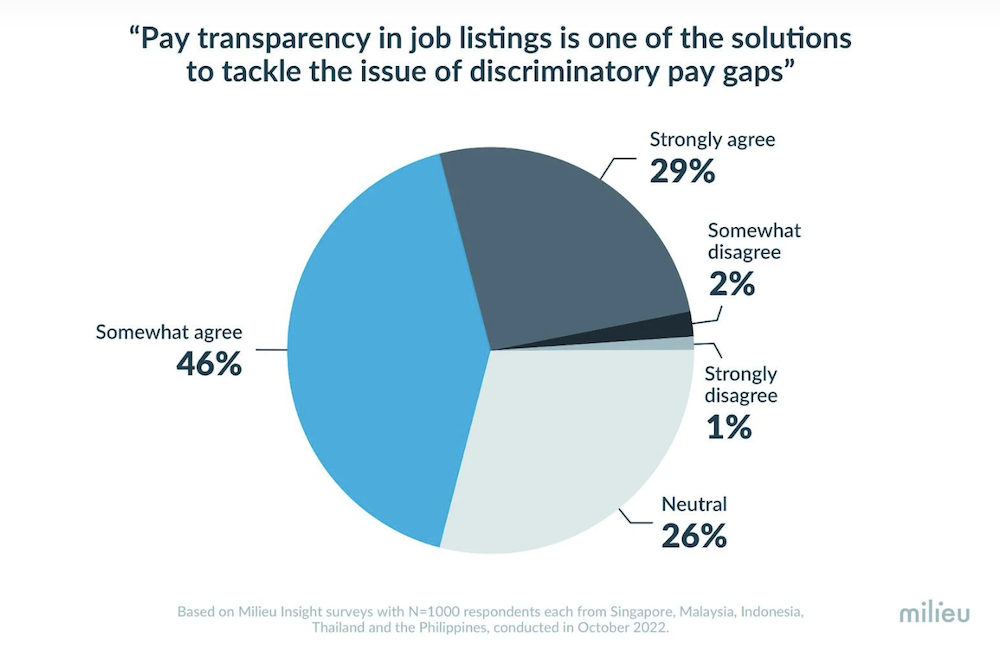
In that vein, many people support the idea of enacting a law that requires job listings to include salary ranges, as they believe it would be advantageous for both employers and job seekers.
Specifically, 76 per cent of respondents believe that employers would benefit from such transparency because it can enhance the company’s appeal. Additionally, 71 per cent of respondents strongly or somewhat agreed that this practice could help tackle the problem of wage disparities.
The good of it: Promoting fairness and equality
The same survey by Milieu Insights revealed that jobseekers stand to gain various advantages from pay transparency in job listings.
The findings indicated that 76 per cent of respondents believed that pay transparency would provide clarity regarding their appropriate compensation based on their experience or qualifications.
Additionally, 56 per cent expressed that it encourages competitive pay, while 54 per cent acknowledged that it streamlines the job search process by allowing them to quickly dismiss opportunities with unsatisfactory pay.
Furthermore, half of the respondents acknowledged that pay transparency contributes to the closure of discriminatory wage gaps. Additionally, 39 per cent of the participants appreciated pay transparency as it eliminates the need for extensive research on salary information.
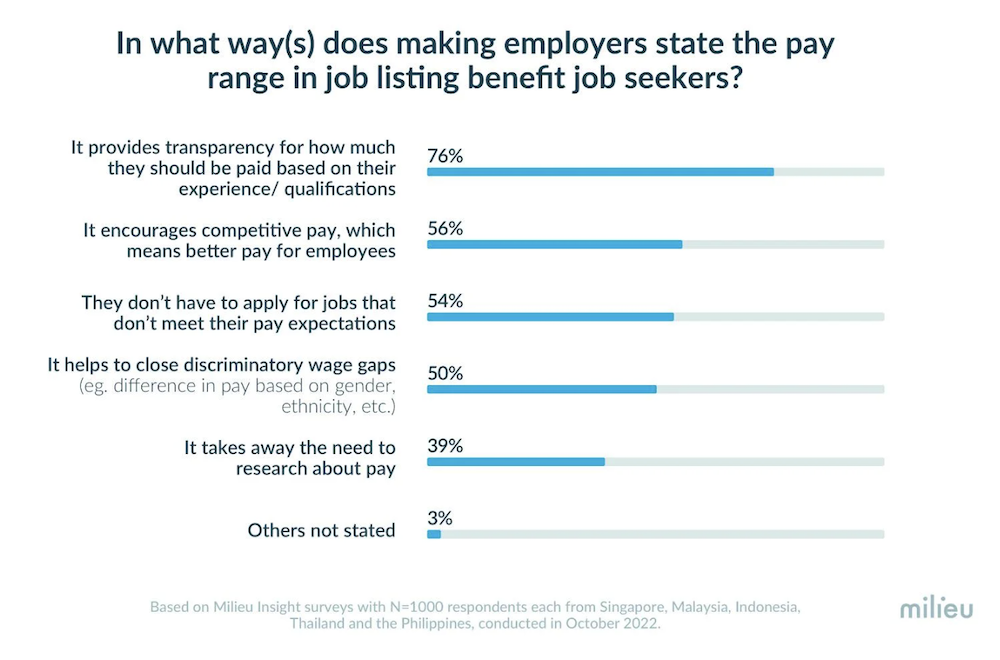
As mentioned earlier, wage transparency can serve as a powerful tool in combating gender pay disparity.
By revealing salary information, companies can identify any discrepancies between male and female employees and take necessary steps to rectify them. Transparency empowers women to negotiate better salaries as they become armed with information about fair compensation levels.
Ultimately, this helps in narrowing the gender pay gap and promoting gender equality in the workplace.
Wage transparency can also play a crucial role in addressing other forms of discrimination such as race or age. By bringing salary information into the open, organisations are prompted to evaluate compensation objectively and ensure equitable treatment for all employees.
This practice compels employers to base remuneration decisions on merit and qualifications rather than biases or prejudices. As a result, wage transparency helps create a level playing field, reducing the impact of discriminatory practices and promoting a diverse and inclusive workforce.
Additionally, wage transparency helps to enhance organisational fairness. Transparent compensation practices foster a sense of fairness among employees. When individuals are aware of how their salaries compare to their colleagues’ and industry standards, it creates an environment of trust and reduces the likelihood of resentment.
Employees are more likely to feel valued and motivated when they perceive that their compensation aligns with their contributions and the efforts of their peers. Consequently, this improved sense of fairness leads to higher employee morale, increased job satisfaction, and ultimately, greater productivity and employee retention.
Lastly, one of the most significant benefits of wage transparency is the increased accountability it brings to organisations. When salary information is accessible to employees and the public, it holds companies responsible for their pay practices.
Organisations that prioritise fair compensation are more likely to attract and retain top talent, as employees seek workplaces where their contributions are acknowledged and rewarded fairly.
Conversely, organisations with significant wage disparities may face reputational damage and external pressure to rectify the situation. By promoting accountability, wage transparency drives positive change and motivates companies to prioritise fair pay practices.
The bad of it: Balancing transparency and privacy
Despite its potential benefits, there are several downsides and challenges associated with implementing wage transparency policies.
One of the primary concerns raised by employers is the potential for unhappiness and dissatisfaction among current employees. Revealing salary ranges in job listings can expose pay differences, leading to tension and resentment among colleagues.
Tan Jia Qi, a former marketing executive at a cryptocurrency company, shared with Vulcan Post her experience of referring a friend for a similar position within the company. To her surprise, she discovered that her friend had been offered a monthly wage that is S$500 higher, despite having less relevant experience.
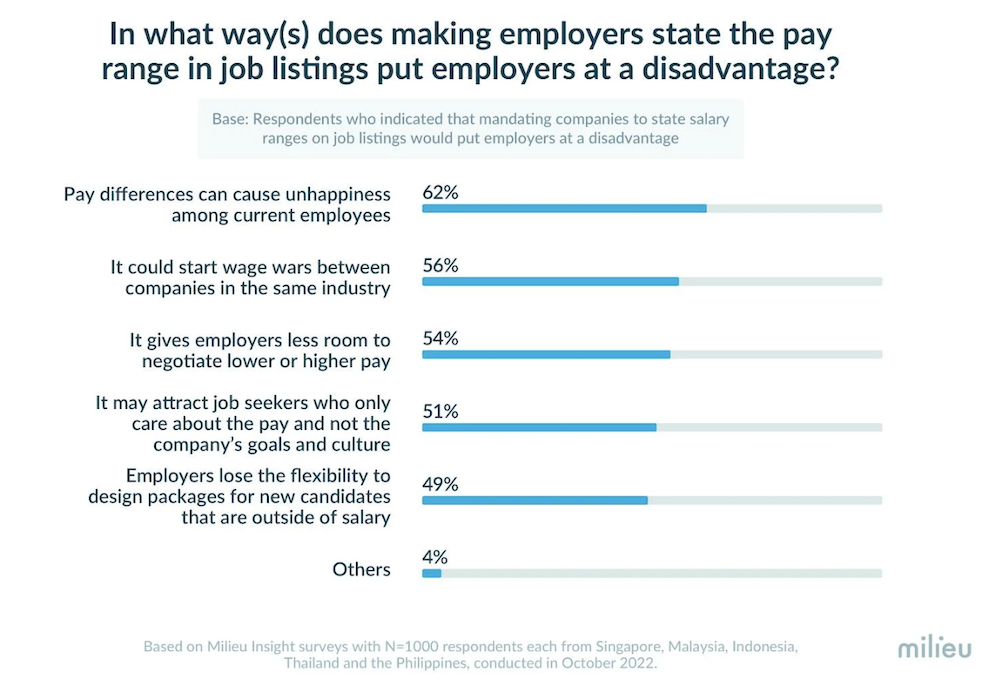
According to the Milieu Insights survey, a significant majority (62 per cent) of employers expressed concerns that wage transparency could result in unhappiness among their workforce. This dissatisfaction may arise when employees discover that their peers are earning more for similar work, potentially creating a negative workplace culture.
Moreover, the negative impact of wage transparency on employee performance and productivity cannot be overlooked.
A separate study conducted by a commercial bank in Asia found that when employees learned that their peers earned more, their performance and working hours declined. The knowledge of salary disparities led to lower motivation and decreased productivity.
Employees may engage in self-evaluation, experience jealousy, and develop resentment towards colleagues who earn more. This not only affects individual performance, but also the overall work environment.
Privacy concerns also play a significant role in the criticism of wage transparency. Many individuals value discretion when it comes to personal finances, and the public disclosure of salary information can compromise their privacy rights.
The fear of judgment or negative consequences may also discourage employees from sharing salary information.
Critics argue that wage transparency should not come at the cost of individual privacy and discretion regarding personal finances. As such, striking a balance between transparency and privacy is crucial to ensure the successful implementation of wage transparency policies.
Another downside of wage transparency is the risk of competitive disadvantage for businesses. Disclosing salary information can put companies at a disadvantage, particularly in industries where pay scales vary widely.
Employers may worry about losing talented employees to competitors who can offer higher salaries. Striking the right balance between transparency and maintaining a competitive edge becomes a significant challenge for organisations.
Additionally, pay transparency can lead to higher staffing costs for businesses. Closing wage gaps and raising pay to market rates can be financially burdensome during the adjustment period. Companies operating on a tight budget may face difficult choices, such as reducing their workforce or hiring fewer people to ensure fair compensation for all employees.
Moreover, when a company reveals its pay rates, it provides direct insight to competitors, potentially putting them at a disadvantage during pay negotiations and talent acquisition efforts.
Critics also argue that wage transparency may place an excessive emphasis on pay as the sole indicator of fairness. While addressing pay disparities is crucial, it is essential to consider other factors contributing to inequality, such as career advancement opportunities, flexible work arrangements, and employee benefits.
Ultimately, a holistic approach that takes into account all aspects of the work environment is necessary to ensure fairness and equal opportunities for employees.
Wage transparency is not a one-size-fits-all policy
It is important to recognise that wage transparency is not a one-size-fits-all policy. Different organisations may require different levels of transparency based on their unique culture and workforce composition.
For example, companies with a predominantly millennial workforce may be more open to salary transparency, while organisations with a higher proportion of older employees may prefer to maintain privacy around salaries.
As a testament, a survey by Bankrate conducted in the United States revealed that 42 per cent of Gen Z workers (aged 18 to 25) and 40 per cent of millennial employees (aged 26 to 41) have disclosed their salary details to either a co-worker or professional acquaintance.
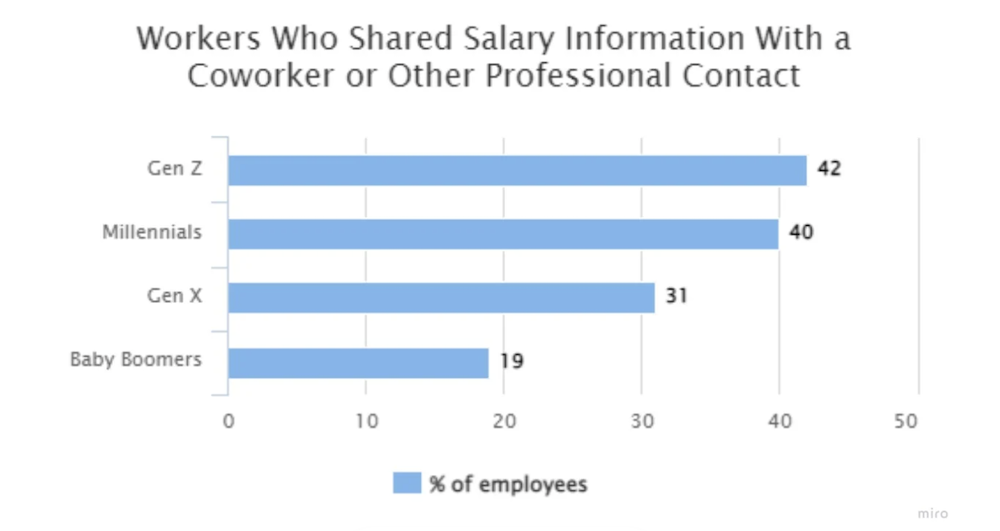
However, Singapore is a more conservative country, so it’s not surprising that it lags behind in terms of salary discussions among colleagues. In fact, a 2019 survey found that nearly half of Singaporeans said that talking about pay with others was “inappropriate“.
Implementing wage transparency gradually, starting with partial disclosure such as revealing the pay calculation formula or providing salary ranges for standardised job levels, can facilitate a smoother transition and enhance acceptance.
HR professionals often utilise the comparison ratio, also known as compa-ratio, to determine competitive pay. The ratio is calculated by dividing an employee’s salary by the median salary and multiplying it by 100, enabling the assessment of how an individual’s salary compares to others in similar positions across different companies.
The compa-ratio is also employed to calculate salary increases for existing employees and determine salary offers for new hires.
Some companies disclose pay ranges instead
While full salary transparency is still relatively uncommon in Singapore, the inclusion of pay ranges in job advertisements is becoming more commonplace. This practice allows current and prospective employees to better assess their compensation packages and make informed decisions about their careers.
Organisations typically establish a pay range for each role, with a minimum starting salary as a reference point.
When making offers, companies tend to offer salaries at the lower end of the range to individuals with little experience, in the middle of the range to those who have the required capabilities, and at the higher end of the range to individuals with an excellent track record. This approach acknowledges the value of experience and performance, and it often fast-tracks talented employees for promotion.

Big companies, like Microsoft, announced last year their plans to incorporate salary details into their job advertisements. Employees will have the opportunity to request information regarding the average compensation levels of their colleagues, in addition to understanding the criteria utilised for determining pay and advancement opportunities.
Closer to home, VFlowTech, a Singapore-based energy storage solutions firm, has been practicing pay range transparency since its inception in 2018. While employees are aware of the pay ranges and increments for each position, individual salaries remain confidential.
This approach has created a more equitable and inclusive workplace, leading to improved employee retention. Puja Shah, VFlowTech’s senior human resources manager, suggests that companies considering pay range transparency establish clear policies and procedures, provide access to information about how pay is determined, conduct regular market reviews, train managers to communicate pay policies, and solicit feedback from employees.
A January 2023 research conducted by LinkedIn indicates that 91 per cent of respondents in the United States believe that including salary ranges in job postings would influence their decision to apply for a role. This sentiment is consistent across industries and seniority levels.
Salary clarity empowers applicants to tailor their job search and gain a realistic understanding of their growth potential, while recruiters can focus on candidates who align with the provided salary information.
However, concerns about competitors using salary information to poach employees and the inclusion of non-cash components in compensation packages often dissuade companies from being transparent.
More senior roles, in particular, are less likely to disclose salary details due to the inclusion of components such as Restricted Stock Units (RSUs) or Employer Stock Options (ESOPs) that are not reflected in salary guides.
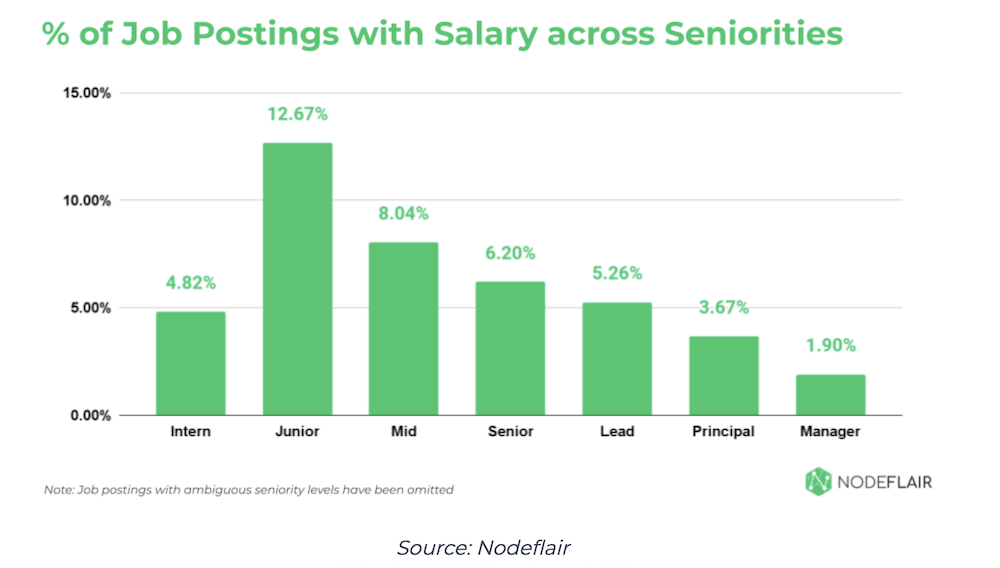
Although there is no mandate for public disclosure of salary ranges or individual salaries in Singapore, resources for salary benchmarking are available.
The Ministry of Manpower’s Salary Comparison page provides insights into wages and their comparison to other jobs and market norms. Private recruitment firms also produce annual salary guide reports based on their job placements in Singapore, offering additional salary information.
Meanwhile, platforms like Glassdoor offer crowdsourced company reviews and salary ranges, but caution must be exercised as these may not always accurately reflect actual salaries.
Alternatively, job seekers can turn to local job portals such as MyCareersFuture and JobWiz. MyCareersFuture allows employers to disclose the salary range for positions, and JobWiz emphasises the transparency of salary ranges and company perks, enabling potential candidates to assess the suitability of job listings.
Fostering a more transparent job market
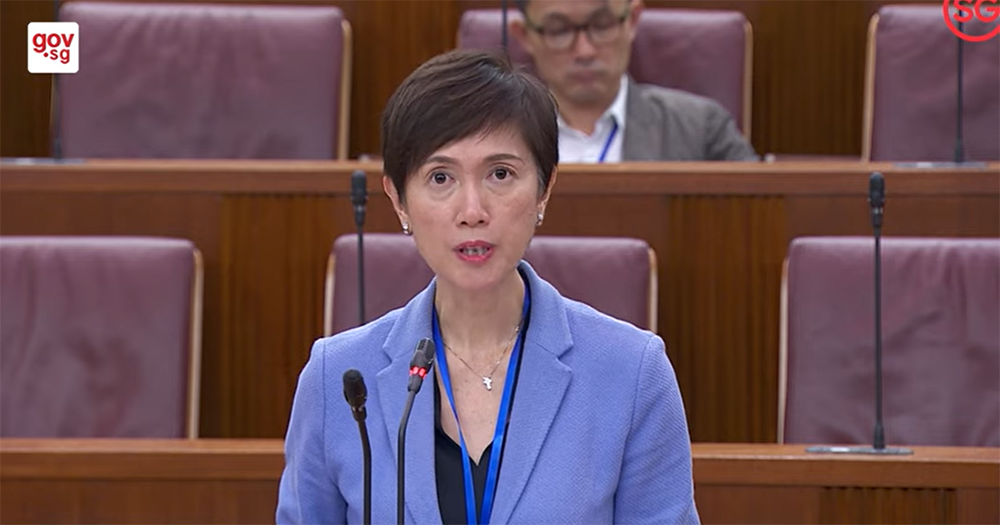
While the decision to adopt pay transparency remains with individual companies, the issue of requesting job applicants to reveal their last-drawn salary is a hotly debated one, which was heavily discussed by then-Minister for Manpower Josephine Teo in Parliament in June 2020.
The growing prevalence of pay transparency reflects a shift towards a more transparent and equitable hiring process in Singapore. By disclosing salary information upfront, employers empower job seekers to make informed decisions about their career choices.
This increased transparency not only helps candidates assess their fit with the organisation, but also builds trust and reduces potential discrepancies during salary negotiations.
Furthermore, the adoption of pay transparency aligns with the evolving expectations of the modern workforce, especially among younger generations who value transparency and fairness in the workplace. Job seekers are increasingly drawn to organisations that are open about compensation, viewing it as a sign of a progressive and inclusive work environment.
As Singapore’s job market continues to evolve and competition for talent remains intense, embracing pay transparency represents a positive step for both employers and job seekers.
Employers can attract and retain top talent by offering competitive compensation packages and demonstrating a commitment to transparency. Meanwhile, job seekers can make more informed decisions when considering job opportunities, leading to better alignment of talent with suitable positions.
As the demand for workplace transparency grows, it is conceivable that Singapore may consider introducing formal pay transparency laws to ensure a level playing field across industries and companies. However, for now, the voluntary adoption of pay transparency by companies demonstrates a proactive approach toward fairness and a more transparent job market.
Featured Image Credit: Shutterstock








